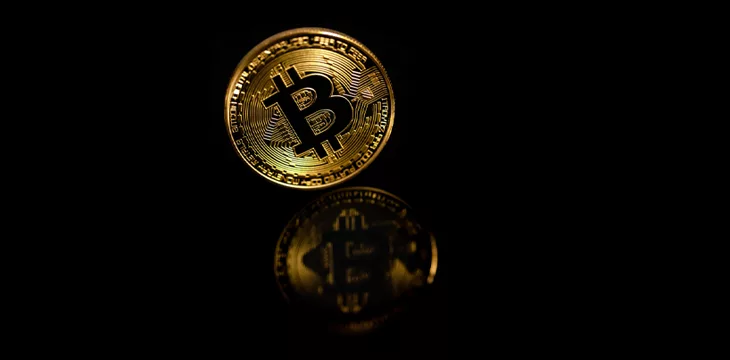|
Getting your Trinity Audio player ready...
|
This article was first published on Dr. Craig Wright’s blog, and we republished with permission from the author.Read Part 1, Part 2, Part 3, Part 4, Part 5, Part 6, Part 7, Part 8, Part 9, Part 10, and Part 11.
De Filippi et al. (2022) created a seemingly well-argued academic research paper focused on the means by which distributed blockchain-based networks could act outside of national rules and might form the foundation of a supra-national regulatory system controlled by developers. In this paper, the authors present the argument of the plaintiffs in the U.K. legal case of Tulip Trading Limited v. Bitcoin Association For BSV & Ors [2022] as the position of the court. By saying that as “developers are a fluctuating group of individuals […] it cannot realistically be argued that they owe continuing obligations to, for example, remain as developers and make future updates whenever it might be in the interests of [bitcoin] owners to do so” (De Filippi et al., 2022, p. 31), the authors have taken a legal position contrary to that held within the U.K. courts which have allowed the action by Tulip Trading Ltd.
In referencing the actions of the U.S. Treasury Department and the sanctions applied against the illegal cryptocurrency mixer “Tornado cash” (De Filippi et al., 2022, p. 31), the authors demonstrate an unprofessional bias towards the rule of law and Western democratic frameworks. In calling the actions of the U.S. government draconian because of the arrest and prosecution of individuals associated with illegal money laundering systems and people smuggling, the authors demonstrate an anarchist bias that taints the perception of blockchain technology presented in their paper.
Similarly, while Chaisse and Kirkwood (2022) summarize a collection of legal cases associated with blockchain technology, the authors express a bias against cases brought against developers, such as those from Tulip Trading Ltd. Such bias is demonstrated in misreporting judicial findings and ignoring successful appeals that overturned the result they seek to rely upon. As with De Filippi et al. (2022), such bias undermines the integrity of the research. Unfortunately, it would extend into writing presented by other authors, such as Allen et al. (2022), who at least seem to approach the topic without bias but rely upon the descriptions and understanding presented by other authors, ones who falsely present a biased agenda, that is then used within the industry.
Annotated Bibliography
Chaisse, J., & Kirkwood, J. (2022). Tokenized funding and initial litigation offerings: The new kids putting third-party funding on the block. Law and Financial Markets Review, 1–23. https://doi.org/10.1080/17521440.2022.2153609.
In this article, Chaisse and Kirkwood (2022) have explored the concept of tokenized funding and initial litigation offerings. Yet, in their analysis, the authors represent fractionalized ownership through tokenization as a new creation and ignore previous funding based upon distributed litigation finance. The analysis of litigation funding and tokenisation is premised on the argument that “Blockchain technology enabled tokenization potentially makes the investments accessible to a larger pool of investors” (Chaisse & Kirkwood, 2022, p. 2). However, fractionalized offerings have existed for decades in securitization.
Securitization is the process of converting an existing asset or future cash flows into a marketable security. This was disputed in the European case of MBNA Europe Bank Ltd V HMRC [2006] in relation to a tax dispute. The notion that a blockchain presents a means of placing securitization outside existing legislative frameworks is false. The argument is that because a blockchain is decentralized, the securitization of the asset will also be decentralized and be outside of legislative control. While a definition of decentralization itself may be disputed, the authors introduce an analysis of decentralized autonomous organizations (DAOs) and argue that the bearer nature of the shares precludes them from government oversight.
The article references the “Bitcoin legal defence fund” (Chaisse & Kirkwood, 2022, p. 15) promoted by Jack Dorsey, which is currently involved in an ongoing case with Tulip Trading Ltd. The examples provided in the paper then extend to an analysis of all the regulation of security tokens. Unfortunately, rather than approaching such tokens as a current form of securitisation on a new form of database, the authors treat tokens and token standards as novel and sui generis, leading to a position that they are significantly changed and that the current laws will not apply.
The outcome is that smart contracts are argued as “a way a move towards a decentralized justice system, which is regarded as a form of ‘digital courts’, could be expedited by tokenization” (Chaisse & Kirkwood, 2022, p. 22). In analysing how tokens can provide access to litigation and the creation of DAOs, the authors bypass the consideration of existing laws concerning securitization and bearer instruments. As explained, securitization is the process of converting existing assets or future cash flows into marketable securities. While the legislative framework covers existing token issues, no reference to securitization has been made in conjunction with such systems. Rather, tokens are presented as novel and not as an existing technology using a new type of database.
Allen, J. G., Wells, H., & Mauer, M. (2022). Cryptoassets in Private Law: Emerging Trends and Open Questions from the First 10 Years (SSRN Scholarly Paper No. 4206250). https://doi.org/10.2139/ssrn.4206250.
The paper by Allen et al. (2022) presents an early preprint of a publication set to be released later this year. The research collates forty-one papers, and integrates them into a more cohesive review of the literature concerning “crypto assets” and DeFi. In the analysis, the authors again started with a presumption that digital assets in a blockchain system were fundamentally different to all previous forms of tokenized property. While the authors note that the “overriding trend is for courts to “backwalk” into basic private law questions” (21022, p.3), the approach continues to ignore blockchain as an underlying form of database and consider the existence of the assets not with the user or owner, but with the blockchain itself. In this argument, the “DeFi sector’s ambitions for radical decentralization” are considered outside of the frameworks for securitized assets.
Allen et al. (2022, p.5) analyzed 41 legal cases connected to “crypto assets,” and attempted “to identify all reported cases from common law jurisdictions.” The research differentiated between interrogatory and substantive decisions. Yet, the paper more correctly demonstrates the lack of understanding of the cryptic and frequently deceitful descriptions that are touted regarding the operation of blockchain-based systems. For example, at no point is it noted that the blockchain is merely a distributed database recording the exchange of digital assets. Rather, the authors make the false assumption that assets exist within the blockchain itself and overlook the interaction of developers in setting policy.
The paper does note, “England and Wales seems to be the jurisdiction to watch globally” (Allen et al., 2022, p. 4). Interestingly, the paper references several cases brought by companies I have founded or own. Unfortunately, the cases relating to Tulip Trading Limited (Allen et al., 2022, p. 10) are referenced based on the original decision and do not include the decision of the appeals court that overturned the result. Consequently, the paper captures a demonstrably wrong position and reports in favor of the predetermined aim of the researchers. Yet, the author does capture the developing legal framework around a third category of personal property (Allen et al., 2022, p. 15), which extends the existing concepts of physical property and that of an alternative in a chose in action to include a digital asset.
The summaries of cases have captured some of the main points debated within the legal actions, but the reporting lacks integrity, as may be seen in the quick summary of (my wife’s case) Ang v Reliantco Investments Ltd [2019], which seems to imply that the challenge was rejected when the position of the court was the opposite of that noted in the paper. Overall, the paper presents a good summary of legal cases, but the seemingly intentional reporting of the variety of cases that I am personally involved with seems to present a common bias that exists within the industry.
De Filippi, P., Mannan, M., & Reijers, W. (2022). Blockchain Technology and the Rule of Code: Regulation via Governance (SSRN Scholarly Paper No. 4292265). https://doi.org/10.2139/ssrn.4292265
De Filippi et al. (2022) continue to promote the concept of blockchain technology that exists outside of the rule of law, as exhibited in earlier papers by the same author (De Filippi & Hassan, 2018). The argument presents systems such as a DAO as novel and an approach that the law has not already dealt with, while referencing “Lessig’s four modes of regulation” (De Filippi et al., 2022, p. 1) without referencing the earlier work of Timothy Wu (2003) which discredited the papers by Lessig, demonstrating that such systems do not apply in any legislative framework and are unattainable pipe dreams promoted by anarchist actors for decades before the creation of digital systems.
As the authors note, like the internet, “blockchain technologies are now hailed as a new mechanism to escape territorial and governmental regulations” (De Filippi et al., 2022, p. 2). The authors further contend that the purpose of decentralization is “to promote a more distributed governance, and reduce the risks of surveillance or control from centralized power structures” (De Filippi et al., 2022, p. 2), while ignoring the definition of decentralization in networks first presented by Baran (1964) in a seminal work introducing packet switching. The development of decentralization was focused on the production of resilient systems for the U.S. Army. Despite the argument of “blockchain technology as a new type of regulation governed by the ‘rule of code’ (by analogy with the ‘rule of law’) that distinguishes itself from the rules established by traditional centralized Internet platforms” (De Filippi et al., 2022, p. 3), it needs to be noted that the authors are intentionally misrepresenting the meaning of decentralization as it applies to networks.
Further, in claiming that “Public and permissionless blockchains are always and necessarily pseudonymous, in the sense that anyone can join and operate the network without having to disclose their real identity” (De Filippi et al., 2022, p. 6), the authors intentionally ignore the distinction between nodes that create blocks on the Bitcoin network and systems that provide wallet services without validating transactions or providing services to maintain the system. In part, the authors’ approach represents the treacherous vocabulary argued by Walch (2017). The authors extend the discussion into “Rule of Code”-based issues, arguing that any conflict between blockchain-based systems and existing legal rules should be relegated to developers.
References
Allen, J. G., Wells, H., & Mauer, M. (2022). Cryptoassets in Private Law: Emerging Trends and Open Questions from the First 10 Years (SSRN Scholarly Paper No. 4206250). https://doi.org/10.2139/ssrn.4206250
Baran, P. (1964). On Distributed Communications Networks. IEEE Transactions on Communications, 12(1), 1–9. https://doi.org/10.1109/TCOM.1964.1088883
Chaisse, J., & Kirkwood, J. (2022). Tokenised funding and initial litigation offerings: The new kids putting third-party funding on the block. Law and Financial Markets Review, 1–23. https://doi.org/10.1080/17521440.2022.2153609
De Filippi, P., & Hassan, S. (2018). Blockchain Technology as a Regulatory Technology: From Code is Law to Law is Code (arXiv:1801.02507). arXiv. https://doi.org/10.48550/arXiv.1801.02507
De Filippi, P., Mannan, M., & Reijers, W. (2022). Blockchain Technology and the Rule of Code: Regulation via Governance (SSRN Scholarly Paper No. 4292265). https://doi.org/10.2139/ssrn.4292265
Walch, A. (2017). Blockchain’s Treacherous Vocabulary: One More Challenge for Regulators. 9.
Wu, T. (2003). When Code Isn’t Law. Virginia Law Review, 89(4), 679–752.
This article was lightly edited for clarity purposes
Watch: The Future World with Blockchain

 06-30-2025
06-30-2025 





